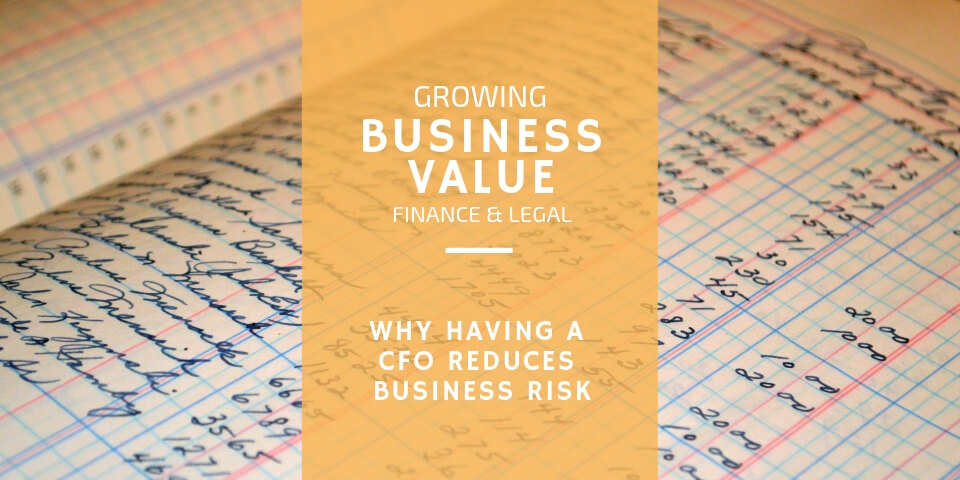
An Introduction to Building a Best-in-Class Finance Department
March 11, 2019
Is it Time to Sell? Overview of Personal & Business Readiness
March 14, 2019Why Every Business Needs a CFO to Reduce Business Risk

Most of the time, business owners think that their Chief Financial Officer (CFO) or their Certified Public Accountant (CPA) only worries about company tax issues and payments. However, your company’s financial needs involve more than taxes. You need a CFO or a CPA to oversee multiple departments and to wear many hats within your organization. By creating harmony within the company’s finance departments, a CFO reduces business risk and increases the functionality of your business.
Podcast Time Index for “The Role of a CFO/CPA”
00:28 – The Role of a CFO/CPA
01:17 – Most Small Businesses only have one individual to handle it all
02:49 – The Four Different Areas of a CFO
03:48 – 1. Treasury
04:22 – 2. Tax
04:42 – 3. Accounting
05:10 – 4. Finance
07:19 – The Four Faces of a CFO
07:45 – The Strategist
07:58 – The Operator
08:12 – The Steward
09:22 – The Catalyst
12:21 – Summary
Departments a CFO Oversees
If you’re using your CFO or your CPA as a tax compliance officer and nothing more, you’re putting your company at risk for financial problems. The person in charge of your company’s fiscal wherewithal should be overseeing the following FOUR departments in your organization, not just one.
- Treasury – First, your financial advisor should oversee your company’s cash flow. This includes its income and expenses, its accounts receivable and accounts payable, and its formal investments.
- Tax – Most obviously, your CFO should also oversee your federal, state, and local tax liabilities as well as your compliance with all tax regulations.
- Accounting – Additionally, your financial officer should handle any account reconciliations, consolidations, and maintenance. This includes General Ledger maintenance and account operations.
- Finance – Finally, your CFO should be in charge of all financial reporting, planning, and analysis. This includes compliance with the Sarbanes-Oxley Act that requires transparency and accuracy of financial reporting.
Roles a CFO Must Fill
As the overseer of the four financial departments, the CFO fills four different roles in your organization.
- Strategist – First, your CFO should focus on driving up company performance based on financial reports.
- Operator – Next, he or she should work on company efficiency to increase profit margins.
- Steward – Additionally, your financial officer should help control company monies and make sure they are not mismanaged or wasted.
- Catalyst – Finally, the CFO should execute financial plans systems.
RELATED ARTICLE: How to Do a Business Risk Assessment
How a CFO Reduces Business Risk
Your company needs someone in charge of all financial departments – treasury, tax, accounting, and finance – who can act as a strategist, operator, steward, and catalyst. The CFO must be a balanced individual. He or she must be able to drive up performance while increasing efficiency. That takes balance and skill.
If one person can’t handle all four roles, then you need four different people to step into those roles and one person to oversee the four. Maybe your CPA acts as your steward while your CERTIFIED FINANCIAL PLANNER (CFP) acts as your strategist. Then, maybe your board of directors becomes your company’s steward, and the CFO becomes the catalyst. You, as owner, oversee all directions and departments.
Whether one person or five people handle your company’s financial divisions and direction, your goal is to create an equilibrium where all departments function together. If they do not work together, you will miss compliance regulations, tax liabilities, general ledger issues, or reporting problems. By overseeing all financial divisions and making them work in harmony, the CFO reduces business risk.
Don’t miss our next article in the business finance series: How Much Cash Should You Keep in Your Business and Personal Accounts?



